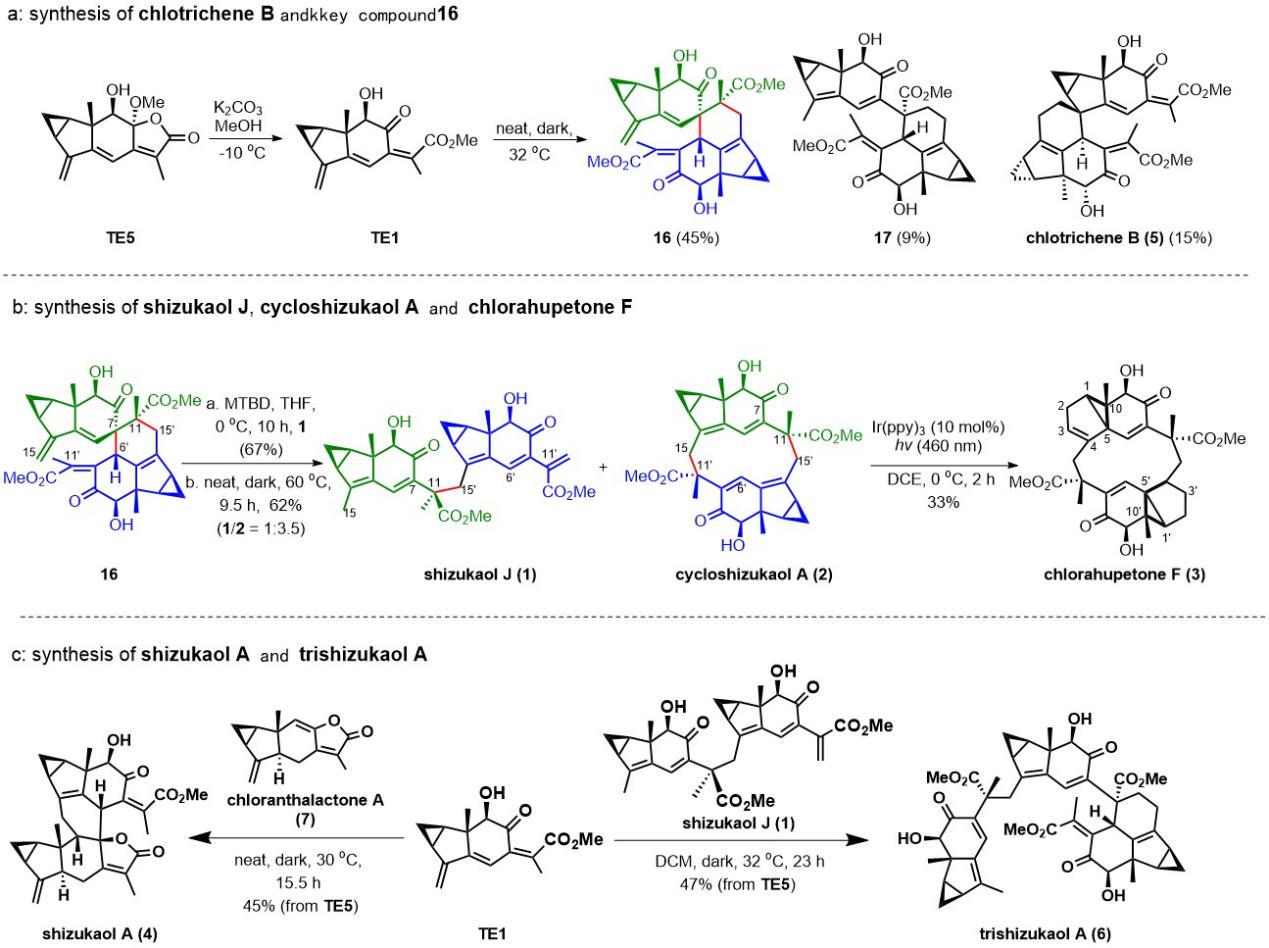A number of lindenane sesquiterpenoid oligomers have been isolated and identified as featured natural products from Chloranthus for their potent bioactivities and unique structures. So far, total syntheses of [2+2]-type, head-to-back [4+2]-type lindenane dimers, C11′-C15-linked dimers shizukaol J and trimer trishizukaol J have been achieved.
Since 2008, the Liu research group has been devoting to syntheses of lindenane sesquiterpenes. Recently, they reported the total syntheses of six lindendane natural products via a widely accepted but non-proved TE1 as a potential biosynthetic intermediate (Fig. 1) which validates the biosynthetic pathway.
In this work, chlotrichene B and the key compound 16 are synthesized with high stereoselectivity through homodimerization of TE1 (Fig. 1a). Compound 16 can be transformed into shizukaol J and cycloshizukaol A through skeleton rearrangement. Cycloshizukaol A is subsequently derived to chlorahupentone F via rearrangement of vinylcyclopropane under light irradiation (Fig. 1b). In addition, shizukaol A and trimer trishizukaol A are obtained respectively by dimerization of TE1 with the monomer chloranthalactone A and the dimer shizukaol J (Fig. 1c).

Fig 1. total synthesis of Lindenane sesquiterpene oligomers via a potential biosynthetic intermediate TE1
In this work, biomimetic total syntheses of 1–6 have been accomplished through successful non-enzymic homo- and hetero- dimerization reactions of TE1 with excellent stereochemical control in mild conditions. The inherent mechanism of the above reactions are elucidated based on DFT calculation via cooperating with prof. Qin Song.
This research was recently published in Angewandte Chemie International Edition with the title “Asymmetric Total Synthesis of Natural Lindenane Sesquiterpenoid Oligomers via a Triene as a Potential Biosynthetic Intermediate”, link: https://doi.org/10.1002/anie.202204303.
This work is supported by the National Natural Science Foundation of China and Sichuan University.
